Al enfrentarnos por primera vez al concepto de business Storytelling tal vez nos tome algo de tiempo entenderlo. Una vez superada esa etapa, nos enfrentaremos, incluso, con otra más crucial ¿Cómo implementarlo en una organización? En el siguiente escrito Gabrielle Dolan nos muestra un procedimiento de 4 fases con el cual se puede implementar el business storytelling en una empresa.
Dolan es una líder global en storytelling y comunicación empresarial. Ha trabajado con miles de líderes con un alto perfil de Australia y el mundo, ayudándoles a convertirse en mejores líderes y comunicadores usando el arte del business storytelling. Gabrielle es altamente buscada como mentora y conferencista internacional sobre estos tópicos. Ha trabajado como consultora independiente de negocios y ocupó varios roles de liderazgo en administración del cambio, aprendizaje y desarrollo en el banco nacional de Australia. Co-fundó exitosamente “One Thousand & One” una de las compañías de storytelling líderes en de Australia, antes de lanzarse como independiente en el 2013. Está graduada en el arte y práctica del programa de desarrollo de liderazgo para la educación Ejecutiva de la escuela Harvad Kennedy. Sus otras cualificaciones académicas incluyen un Master en administración y liderazgo de la universidad de Swinburne y un diploma de asociado en educación y entrenamiento de la universidad de Melbourne. En el 2015 Gabrielle se convirtió en partner de Thought Leaders Global, donde trabaja con organizaciones para ayudarles a obtener ventajas competitivas, enganche e inspiración a través del Storytelling. Su tercer libro, storytelling para entrevistadores, será publicado a finales de este año.
Cuando no se encuentra escribiendo o trabajando, se le puede encontrar deambulando en su jardín de vegetales en su propiedad, en la costa de Nueva Gales del sur. Ella cree que el mundo sería un mejor lugar si hubiera menos estiércol en los negocios y más abono en los jardines.
Para conocer más acerca de Gabrielle y su trabajo, pueden visitar su página web o contactarla en el correo electrónico: [email protected].
CÓMO INTRODUCIR EL BUSINESS STORYTELLING EN UNA ORGANIZACIÓN
Hoy en día el storytelling es lo más novedoso en los negocios y muchas organizaciones están considerando cómo introducir el concepto. La clave del éxito con el business storytelling, radica en implementarlo estratégicamente a través de la organización y asegurarse de que este le sea fiel a su propósito y valores.
La autenticidad es la clave de toda la estrategia. El storytelling no se trata de un truco de mercadeo, manipulación o de enfocarnos en lo positivo, mientras evitamos lo negativo. El storytelling necesita ser auténtico, tanto al momento de contar como en el intento.
El storytelling estratégico involucra cuatro etapas:
- Adiestrar a los líderes e influenciadores con la habilidad.
- Capturar las historias.
- Compartir las historias
- Generar historias.
Adiestramiento
La primera etapa del proceso es entrenar a todos los líderes que se crea conveniente, idealmente incluir al CEO, equipo directivo y los niveles próximos más abajo. Para la mayoría de los altos dirigentes, es importante modelar el uso del business storytelling a través de toda la organización.
Las compañías deben evitar entrenar a los líderes sólo de acuerdo a su jerarquía, al incluir a influenciadores claves y personas de soporte en la organización, tales como especialistas en comunicaciones internas y de recursos humanos. Esto les permite soportar y alentar el uso del storytelling en toda la organización.
También es necesario proveer a los líderes con oportunidades para practicar sus historias y obtener realimentación.
Capturar
Esto consiste en desarrollar estrategias formales e informales para capturar historias en la organización. Las historias que se recopilen deben celebrar el pasado, reconocer el presente y pintar el futuro. Por lo tanto, resulta crítico capturar historias de personas con diferentes edades, posiciones, ocupaciones, locaciones y raza.
Al realizar sesiones de captura de historias, las preguntas a realizar son críticas. EL error más grande en el que suelen incurrir las personas es preguntar por historias. Si preguntas por una historia, raramente encontrarás una, pero las preguntas correctas generarán historias de forma natural.
Compartir
Una vez capturadas las historias, estas necesitan ser compartidas. El lugar más obvio es compartirlas con los líderes adiestrados, para que puedan comenzar a utilizar sus historias en interacciones del día a día con empleados, clientes, prospectos y otros interesados.
Generar
Es de ayuda comprender el concepto de cómo las acciones y decisiones de los líderes y empleados generan historias. Cuando introducimos cambio que involucra una nueva estrategia o valores, las organizaciones necesitan empoderar a todos sus empleados para que demuestren acciones congruentes que generen historias positivas. También se puede maximizar el impacto dentro de la organización, al estar atentos al efecto dominó de las historias.
El primer paso que se debe llevar a cabo al momento de implementar business storytelling es adiestrar a los líderes. Muchas organizaciones se detienen ahí, algo razonable, pues los líderes se comunicarán de una manera más atractiva y eficaz una vez hayan adquirido la habilidad. De todas maneras, para maximizar el retorno de la inversión y generar cambio organizacional, las siguientes tres etapas pueden resultar bastante poderosas. También es importante anotar que las etapas de captura, compartir y generar no son lineales y deben ser llevadas a cabo de manera continua y circular.
Puedes ver un video explicativo sobre este tema en este enlace
Caja de conexiones potenciales
Estás son mis 5 estrategias top para ayudar a implementar un storytelling efectivo en una organización:
- Vincular el storytelling a un asunto de negocios actual.
Presentar el storytelling para un propósito específico, tal como comunicar una nueva estrategia, cambio cultural o nuevos valores organizacionales.
- Proporcionar entrenamiento en storytelling
El storytelling en los negocios es una habilidad. Como cualquier otra habilidad que uno espera que los empleados adquieran, es necesario proveer el entrenamiento para hacerlo efectivamente.
Entrenar a altos dirigentes, personas clave de Asuntos Corporativos y Recursos Humanos, al igual que a influenciadores estratégicos a través de la organización.
- Crear un punto de inflexión:
Entrenar a los líderes en una relativa y rápida sucesión, incluyendo al equipo directivo. Esto crea un ambiente de apoyo y modelos a seguir para asegurar que el storytelling haga parte de la manera en que se comunican.
- Comenzar a capturar historias de forma activa
Usar un acercamiento estructurado para capturar historias. Reunir a un grupo diverso de personas de la organización para descubrir grandes ejemplos de personas, comunicando los valores que se quieren alentar y celebrar.
- Compartir historias de manera proactiva y estratégica
Comenzar a compartir historias a lo largo de los ya establecidos canales de comunicación, al mismo tiempo que explorar medios que se prestan para las historias. Mientras uno se enfoca en canales normales de comunicación, no se debe subestimar el poder de los rumores como canal de comunicación poderoso e informal.
Gabrielle Dolan
Autora-Conferencista-Mentoras y experta destacada en business storytelling
*****
EMBRACING BUSINESS STORYTELLING
When confronting for the First time with the term business storytelling, it may take us a while to understand it. Once we get through that stage, we face another crucial one, How to implement it in an organization? In the next article Gabrielle Dolan, show us a 4 step procedure with which you can implement business storytelling in a company.
Gabrielle Dolan is a global thought leader in storytelling and business communication. She’s worked with thousands of high-profile leaders from across Australia and the world, helping them to become better leaders and communicators using the art of business storytelling. Gabrielle is a highly sought after international mentor and keynote speaker on these topics. Gabrielle has worked as an independent business management consultant and has held various senior leadership roles in change management, and learning and development for the National Australia Bank. She successfully co-founded One Thousand & One, one of Australia’s leading storytelling companies, before launching her own practice in 2013. She is a graduate from the Harvard Kennedy School of Executive Education in the Art and Practice of Leadership Development program. Her other academic qualifications include a master’s degree in Management and Leadership from Swinburne University and an associate diploma in Education and Training from the University of Melbourne. In 2015 Gabrielle became an Australian and New Zealand Partner of Thought Leaders Global, where she works with organizations to help them gain a competitive edge through thought leadership. In the same year, she was also nominated for Telstra’s Business Woman of the Year award. Gabrielle is a best-selling author of Ignite: Real Leadership, Real Talk, Real Results and Hooked: How Leaders Connect, Engage and Inspire with Storytelling. Her third book, Storytelling for Job Interviews, will be published later this year.
When she is not writing or working, she can be found wandering in her vegetable garden at her 25-acre rural property on the southern coast of New South Wales. She believes the world would be a better place if there were less manure in business and more manure in gardens.
To learn more about Gabrielle and her work, you can visit her webpage Gabrielledolan.com, or contact her via E-mail at: [email protected]
Gabrielle just launched her virtual business storytelling course, and wants to offer a special discount to the Haki Blog readers. To take this offer you just need to enter the coupon code 20%DISCOUNT when registering. This coupon code is valid until 31st July, 2016.
HOW TO INTRODUCE BUSINESS STORYTELLING INTO YOUR ORGANIZATION?
Storytelling is the new black in business today and many organizations are considering how they introduce the concept. The key to success with business storytelling lies in implementing it strategically throughout your organization and ensuring it is true to your purpose and values.
Authenticity is at the heart of this entire strategy. Storytelling is not about marketing spin, manipulation or focusing on the positives whilst avoiding the negatives. Storytelling needs to be both authentic in the telling and the intent.
Strategic storytelling involves four stages:
- Equipping your leaders and influencers with the skill
- Capturing stories
- Sharing stories
- Generating stories
Skilling
The first stage of the process is to skill all the necessary leaders, ideally including the CEO, senior leadership team and the next few levels down. It is important for the most senior leaders to be role modelling the use of business storytelling throughout the organization.
Companies should avoid training leaders purely according to hierarchy by including key influencers and support people in the organization, such as internal communications and human resources specialists. This allows them to support and encourage the use of storytelling throughout the organization.
You also need to provide leaders with the opportunity to practice their stories and to obtain feedback.
Share
Once you have captured your stories you need to share them. The obvious place is sharing them with the leaders you have skilled so that they can start to use the stories in their day-to-day interactions with employees, customers, potential customers and other stakeholders.
It is also important to share stories across your traditional communication channels such as your website, newsletters and employee briefings. However, don’t neglect the most important communication channel you have in your organisation…the grapevine. Your aim with sharing stories is to influence the grapevine without controlling it. Overall, these stories should encourage the behaviours and culture you want within your organization.
Generate
It helps to understand the concept of how the actions and decisions of your leaders and employees generate stories. When delivering change that involves a new strategy or values, organizations need to empower all employees to demonstrate congruent actions that generate positive stories. You can also maximise the impact within your organization by being aware of the ripple effect of stories.
The first step you need to undertake when implementing business storytelling is skilling your leaders. Many organizations stop there, which is reasonable, as your leaders will be communicating in a more engaging and effective way once they have learnt the skill. However, to maximize your return on investment and to drive organizational change, the next three stages can be very powerful. It is also important to note that the stages of capture, share and generate are not linear and should be conducted in an ongoing, circular fashion.
You can see a video explanation of this topicin the following link
Potential break out box
My 5 top strategies to help you bring in storytelling effectively into your business:
- Attach storytelling to a current business issue
Bring in storytelling for a specific purpose, such as to communicate the new strategy, cultural change or new organisational values.
- Provide business storytelling training
Storytelling in business is a skill. Just like any other skill you expect your employees to undertake, you need to provide the training to do so effectively. Train senior leaders, key support people like Corporate Affairs and Human Resources as well as other key influencers across the organisation.
- Create a tipping point
Train leaders in relatively quick succession including the senior leadership team. This creates an environment of support and role modelling to ensure storytelling becomes part of the way you communicate.
- Start to actively capture stories
Use a structured approach to capture stories. Bring a diverse group of people together from across the organisation to uncover the great examples of your people delivering the values you want to encourage and celebrate.
- Proactively and strategically share stories
Start to share stories across your already established channels of communication as well as exploring mediums that lend themselves to stories. While focusing on formal communication channels don’t underestimate the power of the grapevine as a powerful informal communication channel.
Gabrielle Dolan
Auhor-Speaker-Mentor and leading expert in business storytelling






